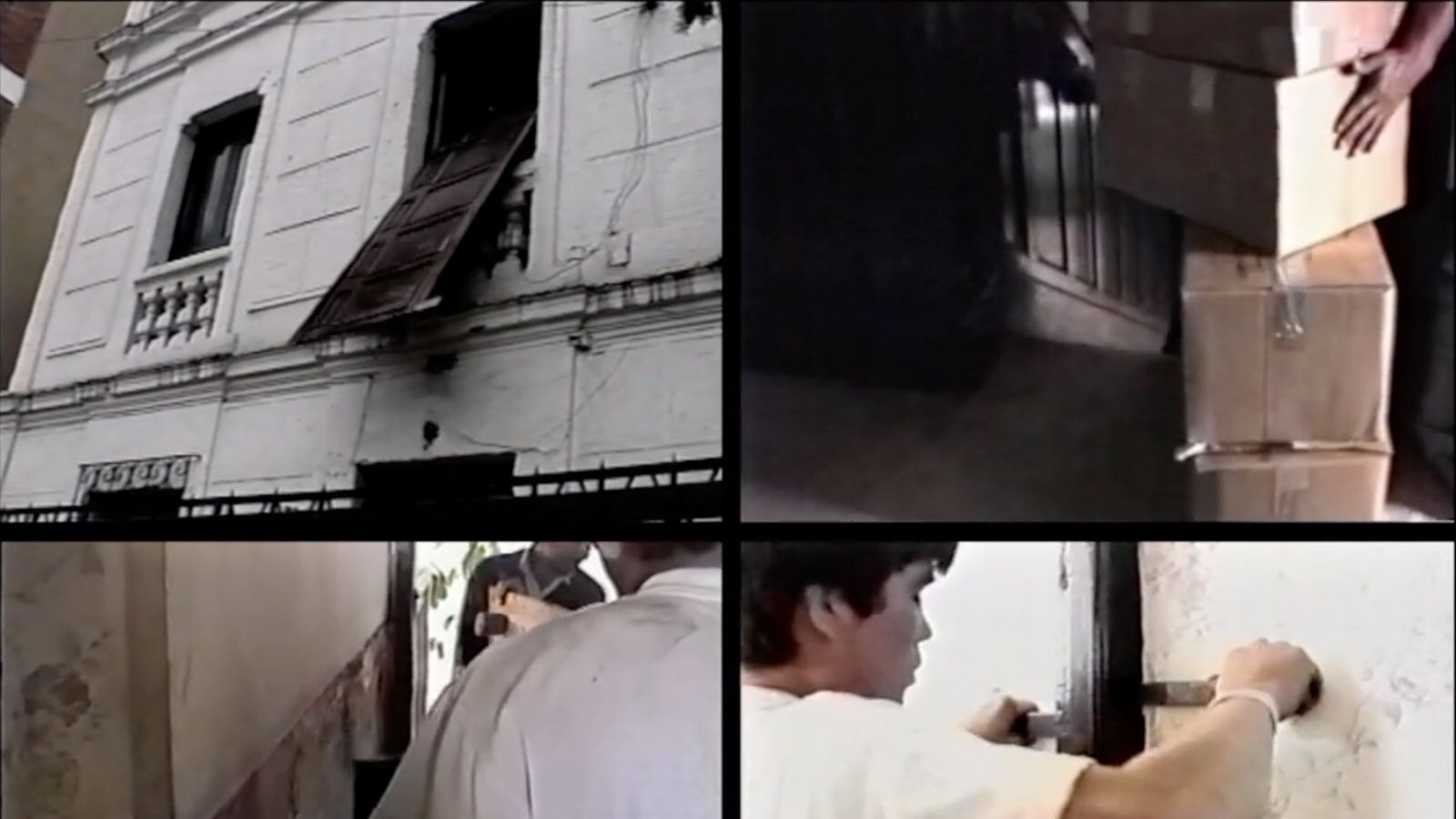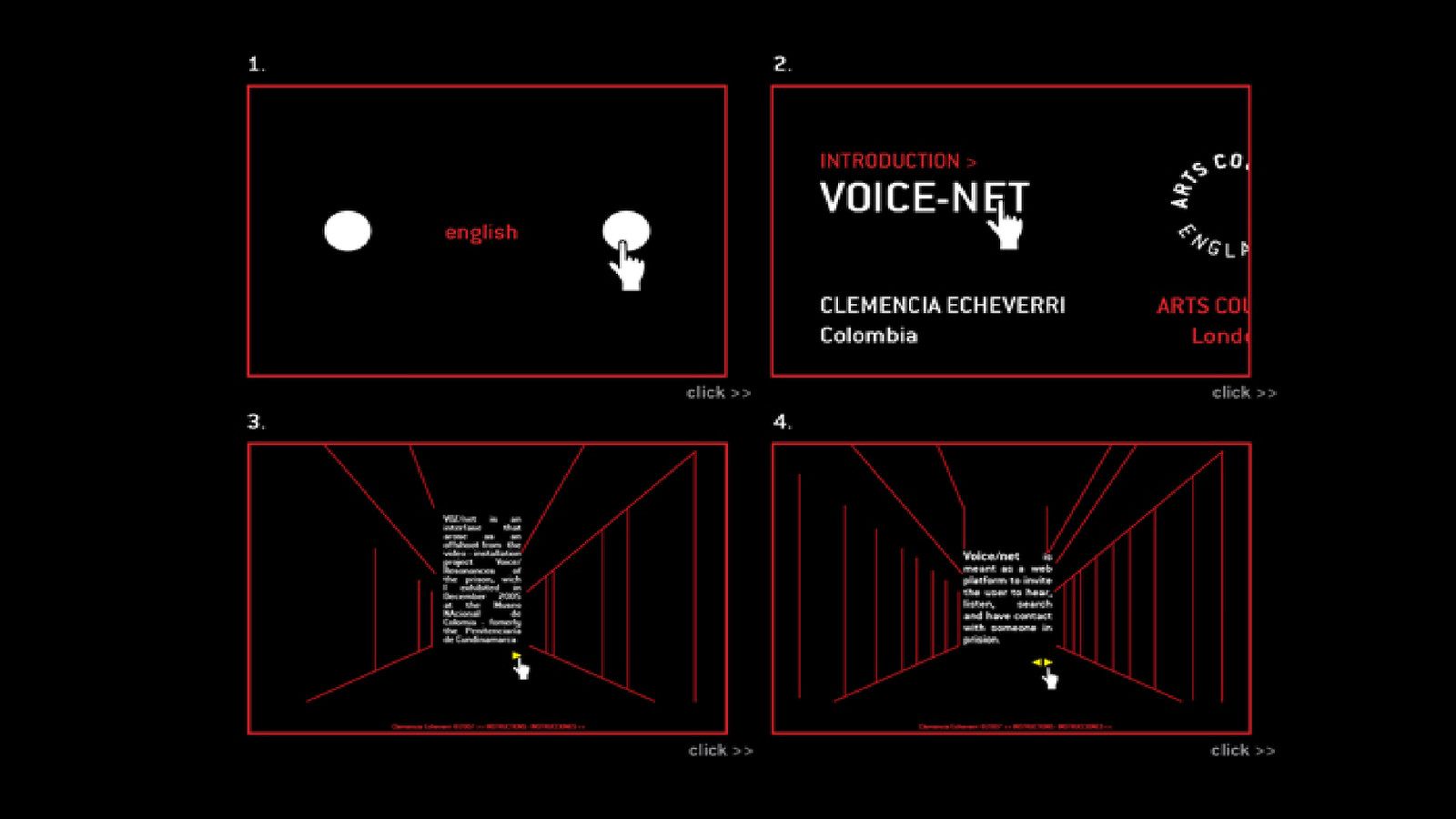
Acidia
Acidia (2006)
Calligraphic transcription on wall of a fragment of the original manuscript of the book Mi vida, by the writer and nun Josefa del Castillo y Guevara. This work was conceived for a specific place in the Santa Clara La Real Church in Tunja, during the 39th Regional Artists’ Salon. In this chapel, Mother Josefa del Castillo wrote some of the most important pages of mystical literature in Latin America; there is her prayer cell, her austere room and her desk. In her place of study and writing, the voice of Mother Josefa appears through an image that brings with it the features of her calligraphy. The work is made with invisible ink, UV light and timer.
ECSTASY, OR THE DARK NIGHT OF MEANING
Two variations on Acidia by Clemencia Echeverri
Ex (in the beginning was the Word)
Acidia: the gesture of the hand is that of an infinite gift, a waiting that is located outside the time of its fulfillment: the tip of the brush carefully follows the silhouette of a calligraphic body that is rewritten -or, to be precise, traced once again on the wall- with an ink whose trace is invisible. The trace cannot be seen in the brightness of the day: its legibility is encrypted in a dark light that, in its renunciation of illumination and the promise of a full vision, makes visible only an intermittent glow. The glimmer of something that remains secret, sheltered from all revelation in its opacity. Echeverri’s brush advances in a sort of blind dance that obeys the mandate of previous strokes through which his hand moves without recognizing the shadow that his steps, the invisible steps of his calligraphic writing, leave on the stone.
The action of this pictorial rewriting is not that of the fixation of a meaning in the trace of what is written: here the ink does not leave a trace that can be read later; here the meaning is not embodied nor does it seek to do so in a writing that aspires to literality, one that seeks to be what it names. The gesture is located, on the contrary, on the threshold of a paradox: the invisible writing of the artist invokes – as does every word before it is pronounced – a meaning that only presents itself in her through its imminent disappearance, its exit from itself in and as the faceless stain (or whose face is the faceless) of the written. Our eyes, like those of the artist, are thus immersed in a space of suspension, an interval of meaning marked by the demand for a renunciation of reading -with the opening, as G. Agamben would say, of “the scandalous contemplation of a goal that shows itself in the very act in which it is forbidden”.
Fragment of text by Juan Diego Perez, Philosopher.
TECHNICAL DATA
Writing action
- UV light
- Invisible ink
- Timer
EXHIBITIONS
– ACIDIA, Regional Artists Salon, Tunja, Santa Clara la Real Convent, 2006.
– GAK Gallery Bremen, Germany, 2012.
ARTICLES OF INTEREST
– Ecstasy or the dark night of meaning. By: Juan Diego Pérez.
– Acidia. By: Marta Rodríguez.
MANUSCRIPTS



